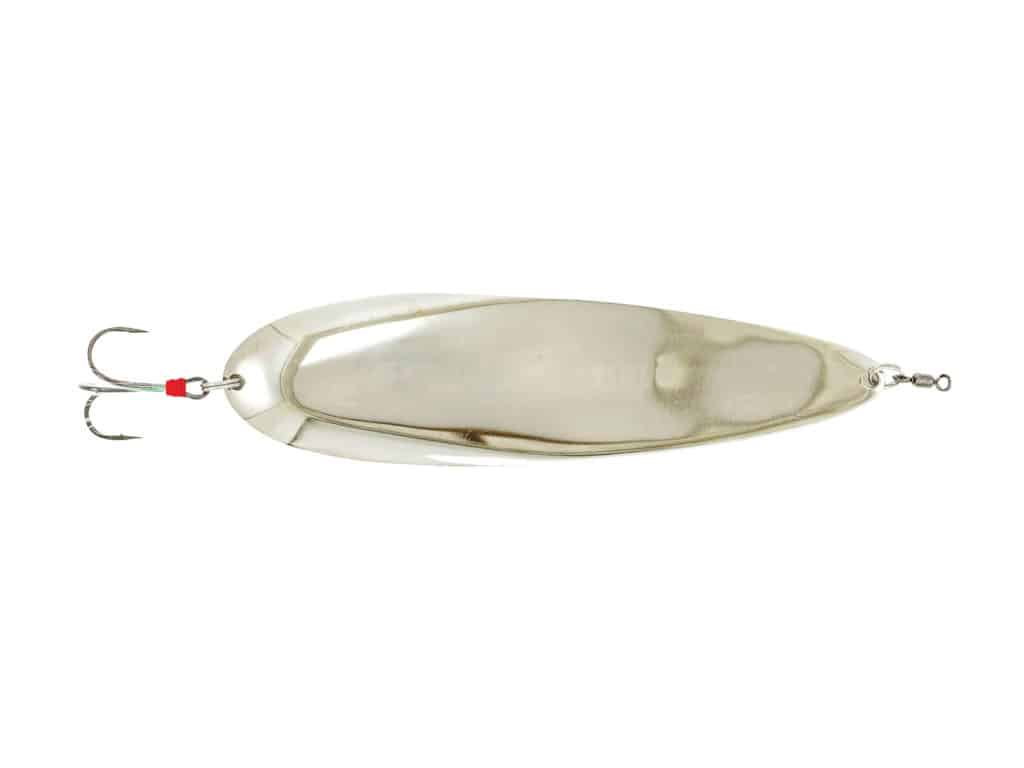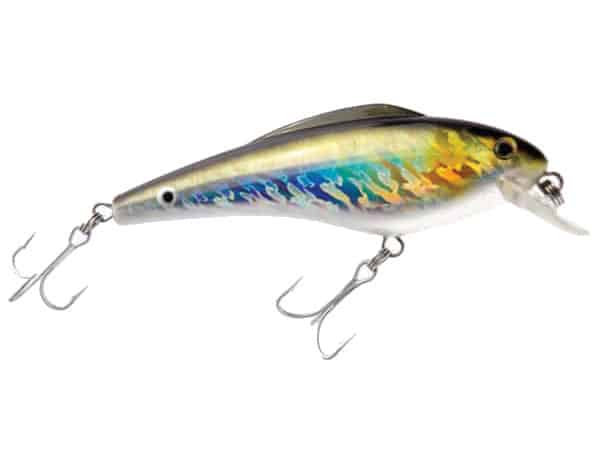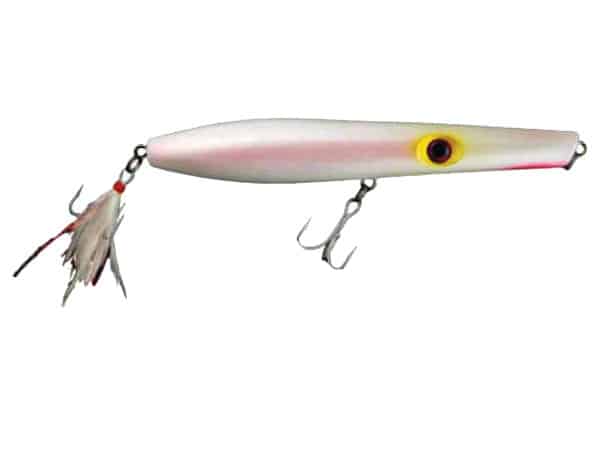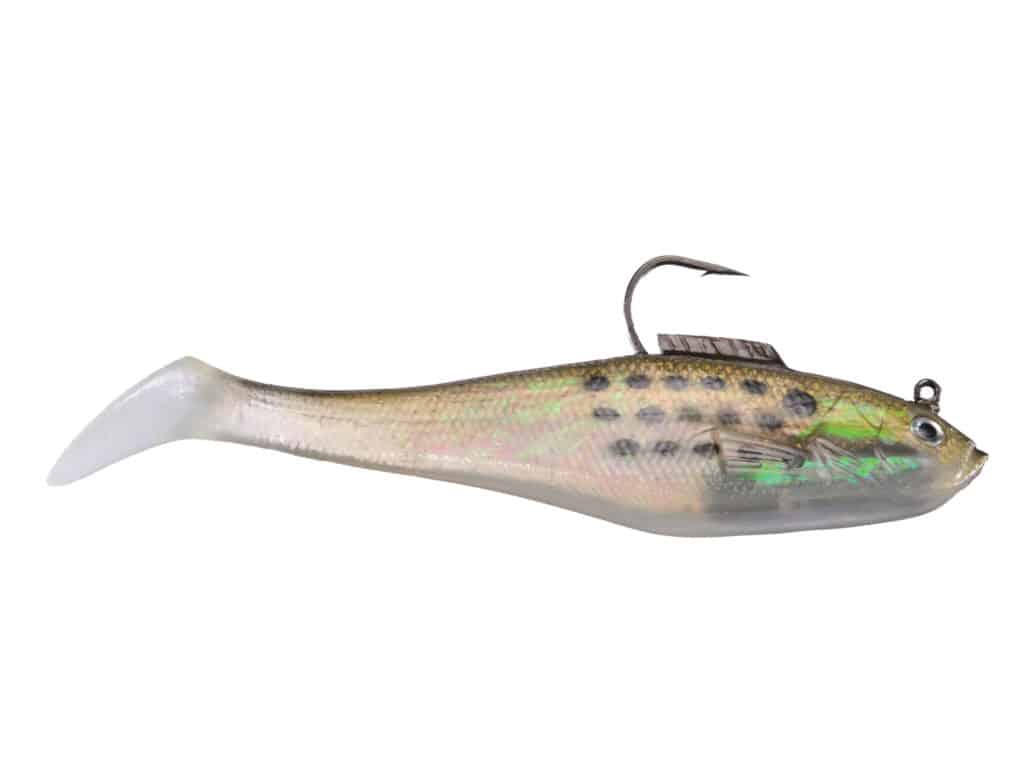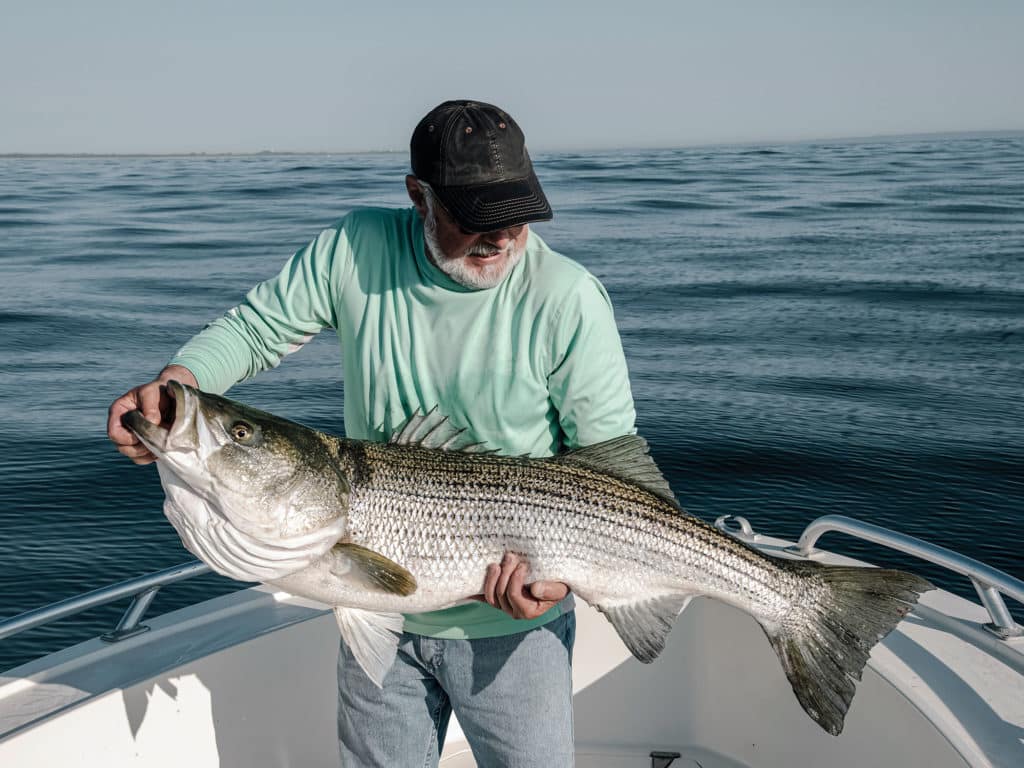
The science tells us striper stocks are in trouble, but you’d be hard-pressed to believe it if you spend your time fishing the estuaries surrounding New York Bight. They say that Chesapeake Bay contributes the most recruits to the coastwide population, but I think the Hudson River provides a more consistent spawning environment, which equals more consistent spawning success from year to year, something the Chesapeake lacks. The result is anglers reap the benefits of what many believe is the best striper fishing anywhere on the planet.
Striper pros agree, including Chuck “Tyman” Manny, who has probably caught and released more bass over 50 pounds than anyone alive. “I still take my boat south for big stripers in the winter,” Manny says. “I spend the rest of the year fishing from a slip in Highlands, New Jersey, because there’s no reason to go anywhere else. The striper fishing is that good in spring, summer and fall.”
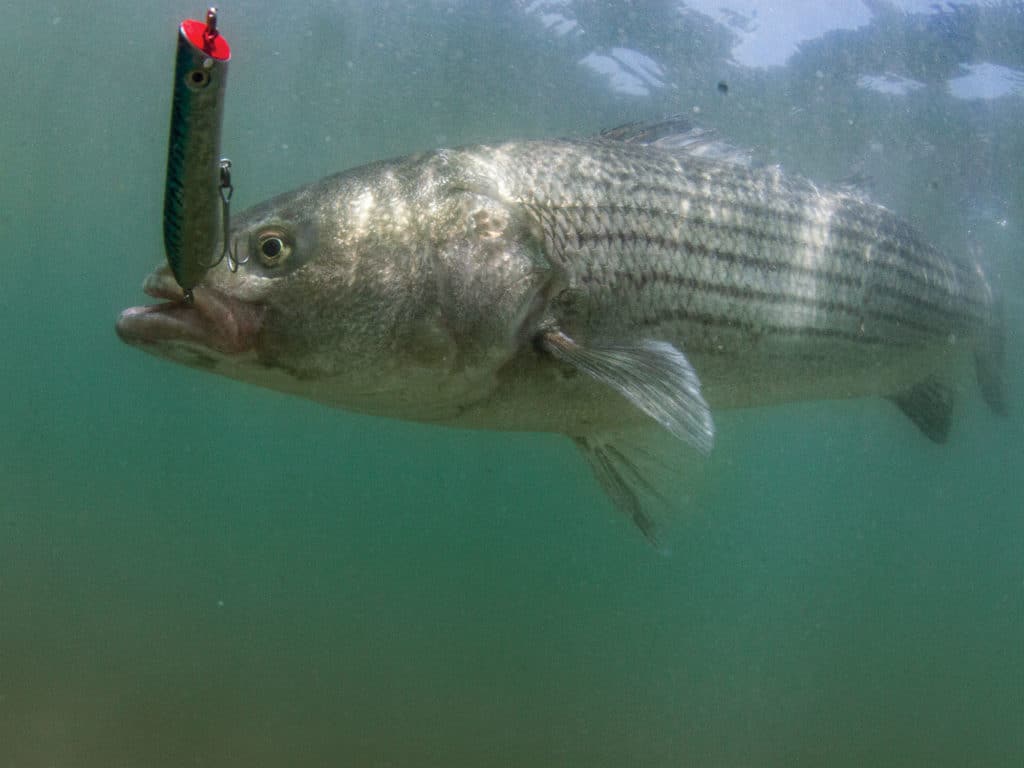
I have fished striped bass from northern New Jersey for over 40 years, but I consulted my friend and co-director of the Manhattan Cup Striped Bass Tournament, Capt. Frank Crescitelli of Fin Chaser Charters, to explore this special area. Crescitelli grew up on Staten Island and has fished here all his life. He knows every nook and cranny the area has to offer and the techniques that produce consistently, so his insights are invaluable.
“This area offers the best spring striper fishing imaginable,” he says. “Most years, bass are active by mid-March, and the shallows are the best place to begin hunting. Look at a chart of the Raritan/Sandy Hook complex and you’ll find thousands of acres of flats with a mean low water of 3 feet. The dark-bottom flats warm up quickly on sunny days, and a couple of degrees difference brings bass out of the ship channels to feed. Nearby Jamaica Bay is another shallow estuary where bass begin foraging early. It’s a fly-rodders dream spot in the spring.”
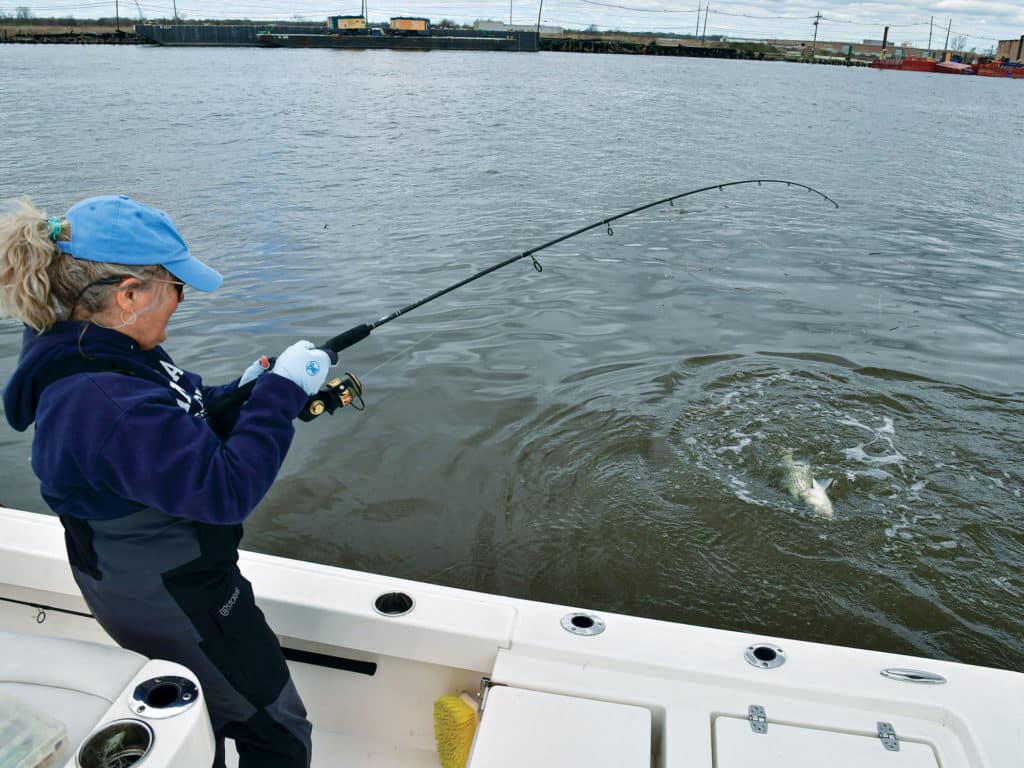
In addition to the bay flats, tidal rivers and creeks become bass magnets in the spring. The Navesink and Shrewsbury rivers provide reliable early-season action, and it only gets better as the weather and water warm. The last few years, the Raritan River has been another early hotspot, although it comes into its own a little later, with April and May being prime time. We had days there last spring when we caught dozens of stripers up to 25 pounds on small plugs and plastics on a single tide; just watch out for the busy railroad bridge at the mouth that only offers sporadic openings.
A typical spring season evolves with the earliest bass usually caught by shore anglers using sandworms or clams. Boat fishermen are close behind, and clam chumming on bay flats produces solid catches of school bass. Just be sure to use circle hooks with any natural bait—it’s the law. By early April, bass prowl the shallow shorelines of the aforementioned rivers, and the sod banks and deep holes of Jamaica Bay.
“I’m a light-tackle and fly guy,” Crescitelli says, “so I don’t troll and only rarely use bait, mostly live bunker. I stick with places like Jamaica Bay, and the islands and the structure along the Staten Island shoreline, where spinning and fly tackle produce a lot of fish, some surprisingly large.
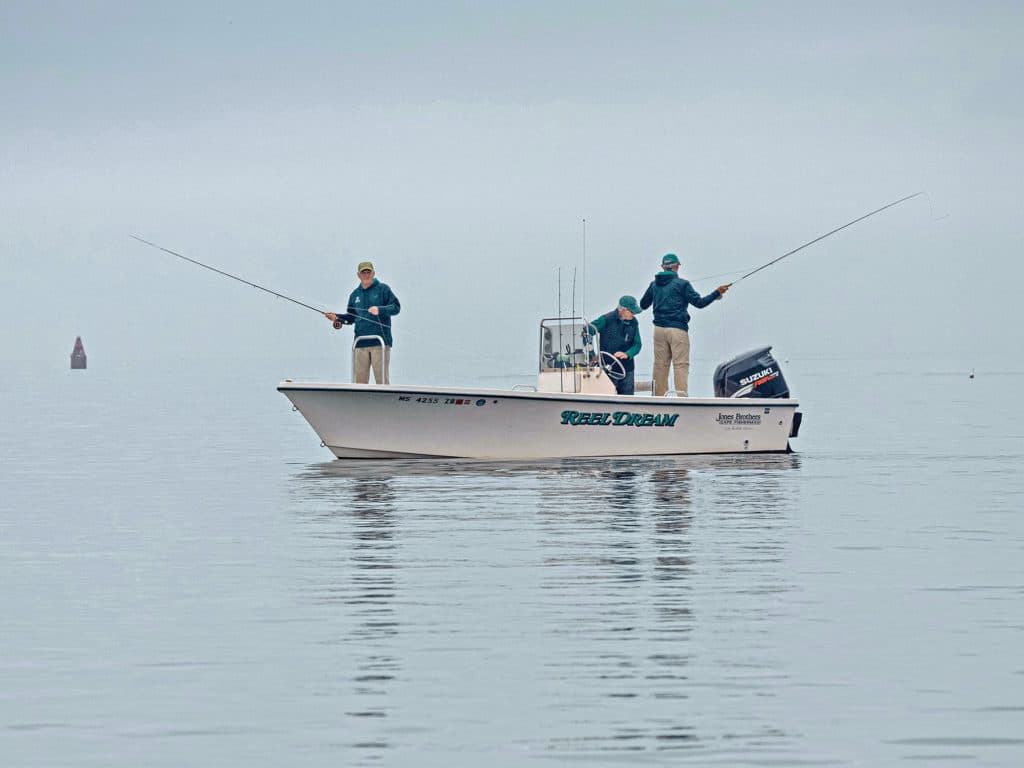
“My favorite flies are a marabou Clouser in chartreuse or blue-and-white when the fishing is tough, and large bunker flies tied with artificial wig hair when large baitfish are present. For spinning, wide-body swimming plugs, like my Guides Secret Bunker Boy, and surface plugs, like my Poppa Pencil, are very productive when fished around structure and bunker pods out in the bay. A freshwater plug called Megadog, a huge surface slider introduced to me when I guided professional largemouth bass angler Oliver Ngy this past spring, proved deadly in his hands, and for me during the remainder of the year.”
While large menhaden appear in the rivers as early as March, which is when we start to see eagles and ospreys picking them off the surface, the bass don’t usually show an interest until the water temperature rises above 50 degrees. Bunker chunks fished on the bottom work first, then live bunker as the water temps push into the mid-50s. When the switch flips, it’s lights-out fishing, with more big bass coming into the area from offshore every day to feed and stage before making their spawning run up the Hudson.
Not only will live-lining bunker catch them, large paddle tails such as Tsunami Swim Shads in 7- and 9-inch models, casting Mojos, a variety of large swimming plugs, pencils and sliders all produce. Another freshwater crossover that showed up last year is the 8-inch Ben Parker Magnum Spoon, a flutter spoon that is deadly around bunker schools when fished using a simple lift-and-drop technique.
Read Next: How to Catch Trophy Striped Bass
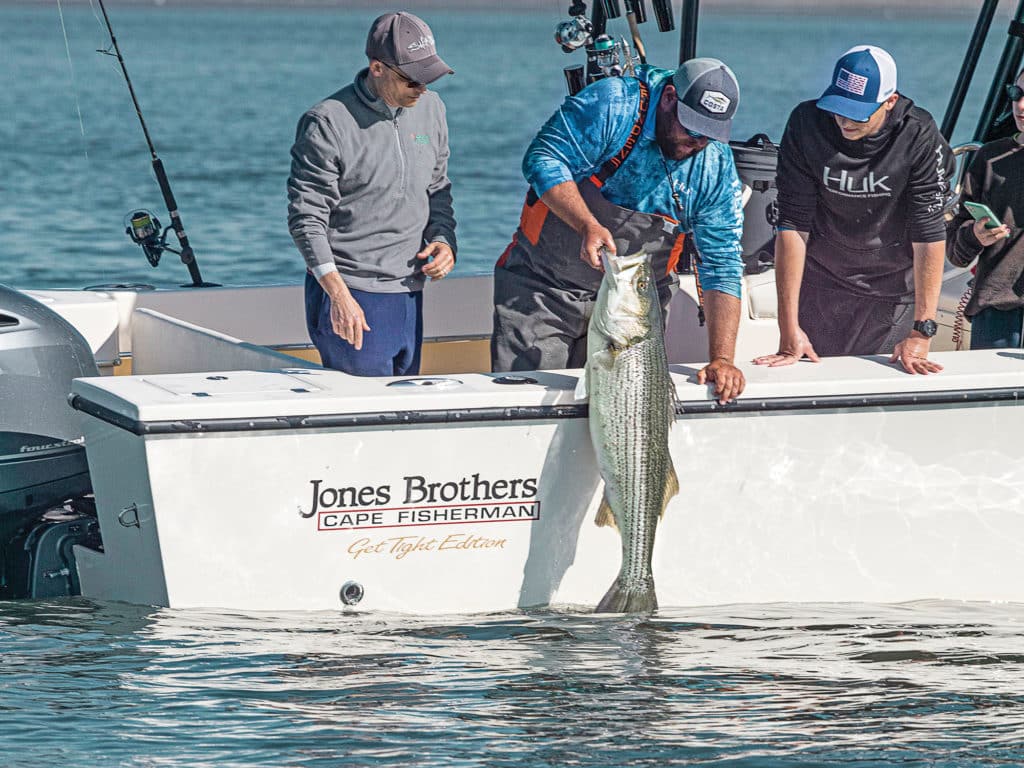
The big bass flood into the bays through May, and then start to break off to head up the Hudson to spawn. Anglers get a second shot at them when they head back downriver and out into the ocean to begin their second migration of the year, this time northbound, leaving a large contingent of small and midsize resident stripers that never seem to leave the confines of New York Harbor and the surrounding waters.
By late May, schools of spawned-out Chesapeake bass migrate into this area on their way north, and the abundance of bait in the bays and nearby ocean waters usually draws and holds them for a while. This gives anglers another shot at catching big fish, and it all repeats itself in the fall as the two stocks make their southward migration.
New York Bight sees more striped bass during the spring months than anywhere else on the coast. It is undeniably striper central.
SWS Tackle Box
Spinning Outfit
- Rod: Tsunami TSSPJS-701H 7-foot jig action or equivalent
- Reel: Penn Spinfisher VI 3500 Series or equivalent
- Line: 20-pound braid
- Leader: 30-pound fluorocarbon leader
- Terminal: Tactical Angler 50-pound Power Clip for quick changes
Fly Outfit
- Rod: 9-foot, 8-weight, such as Sage X Series
- Reel: Sage Spectrum Max or equivalent
- Line: Rio Striper fast-sink or equivalent
- Terminal: 40-pound butt section and 20-pound tippet for a total of 5 feet
SWS Planner
- What: Striped bass, from schoolies to slobs
- When: Springtime, March through May
- Who: Boating anglers equipped with spin, plug or fly tackle
Covering the Options
Numerous artificials, including spoons, plugs and soft-plastics, imitate the behavior of the baitfish stripers seek.
